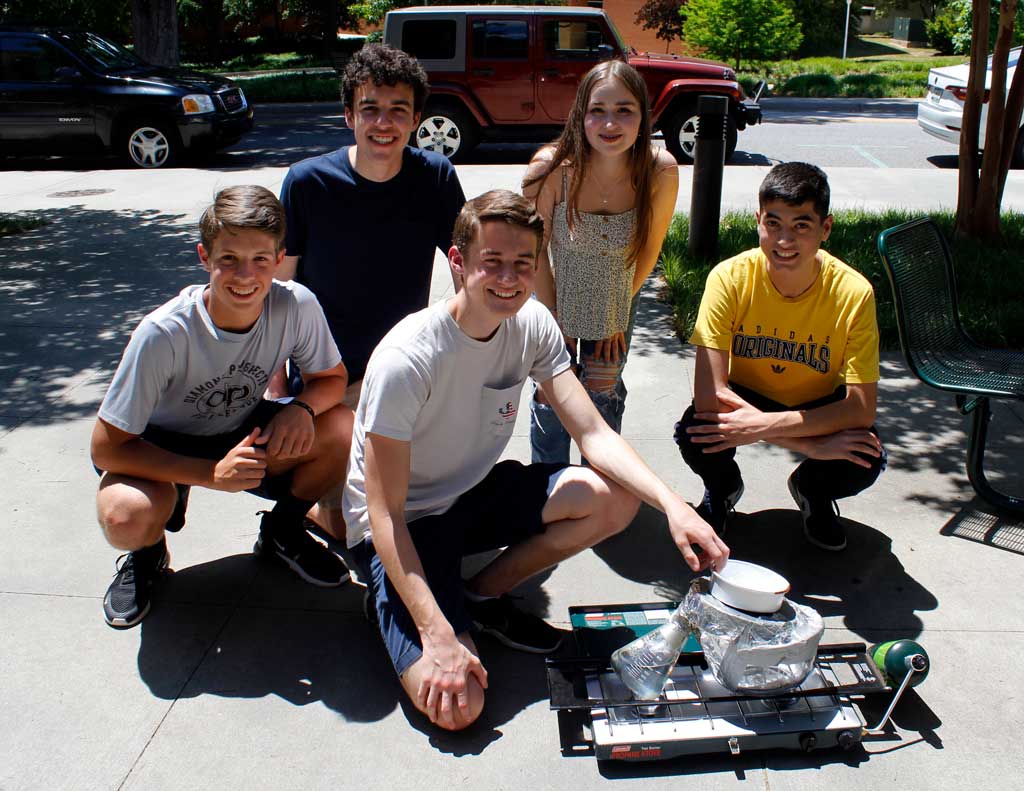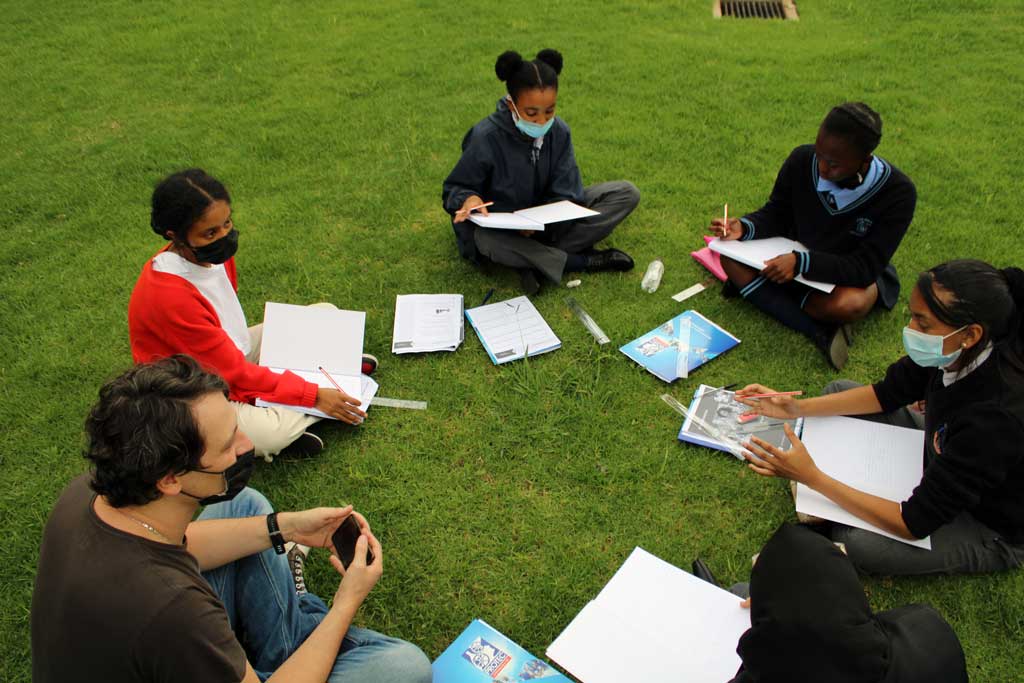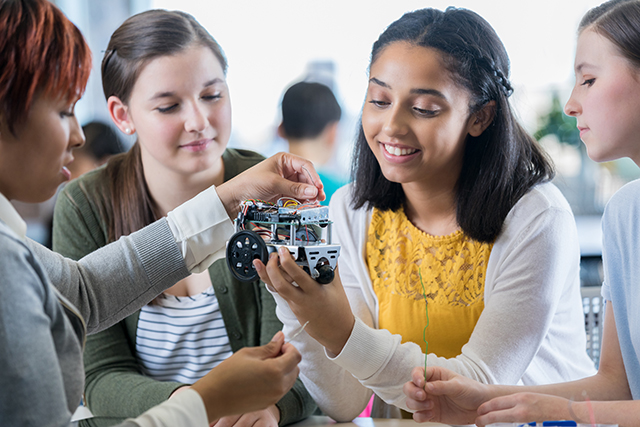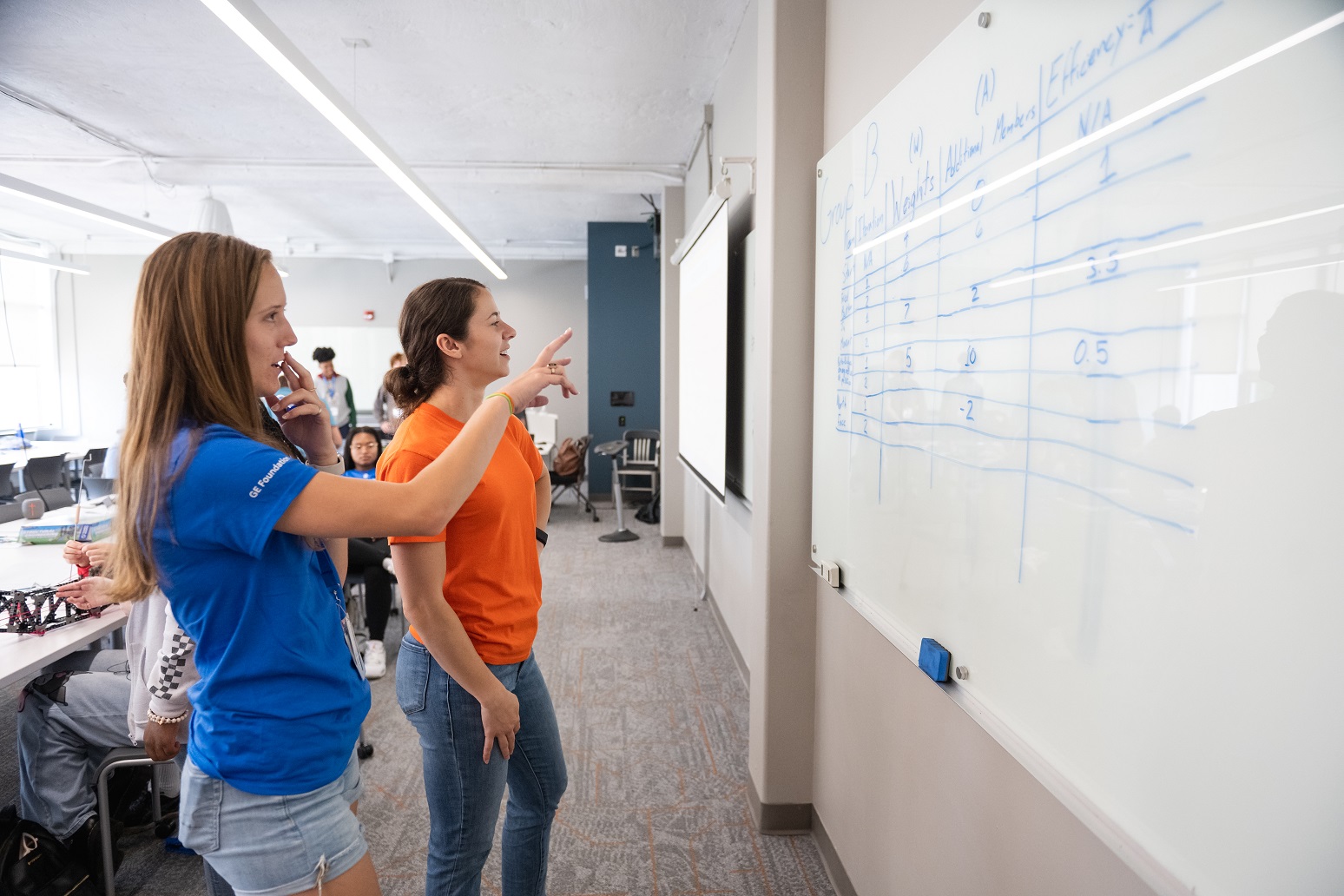

| Ages | Cost | Time |
|---|---|---|
| 11+ | Medium | About 60 minutes |
Playing with magnets is great fun—you can pick up metal things and make them snap together or fly apart. In this Experiment and Explore activity, you will discover the relationship between electricity and magnetism, how electricity creates a magnetic field, how to make this field stronger, and how engineers use this to solve real-world problems.
You can share your experiments with the world at #nextengineersdiy.
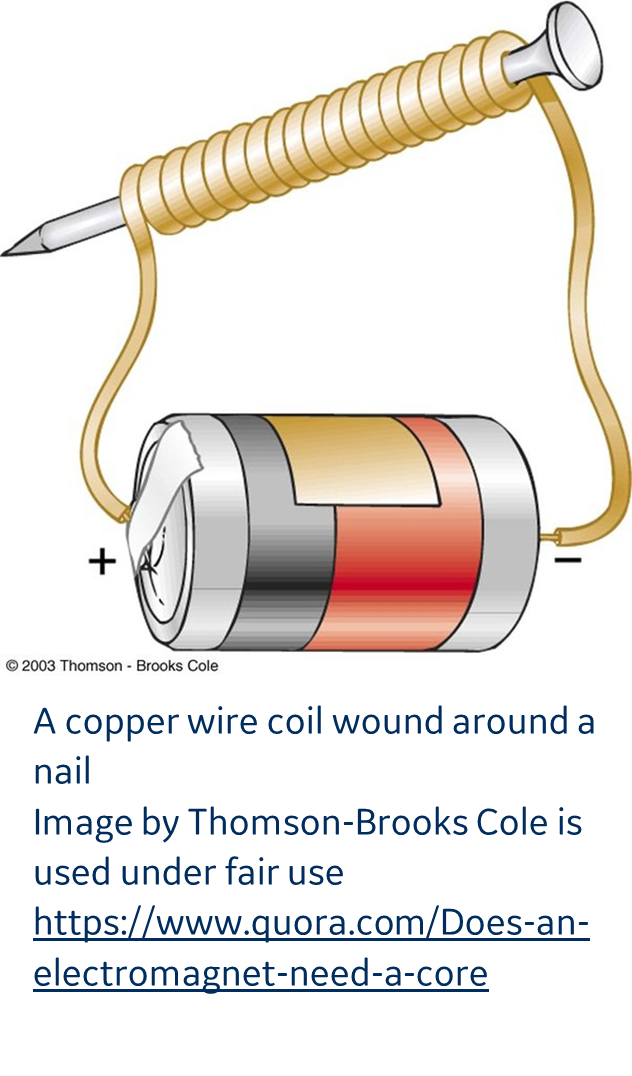
While any reasonably thin but insulated copper wire can be used to create an electromagnet, best results are obtained when using 30/32 gauge enameled copper wire.
If you don’t want to buy new wire, you can often find such wire in old power supplies for mobile phones, laptops, and desktop computers.
- Break off or cut a 25 cm (10 in) piece of copper wire. Use a scissor blade or piece of sandpaper to scrape the insulating enamel off both ends so that you can make an electrical connection. What do you think will happen if you bring a magnetic compass close to the wire? Do this to see if you are correct and observe what happens to the compass needle.
- Tape two of your batteries together end-to-end with some electrical tape.
- Now connect the wire to your batteries (using the crocodile leads, if available). Use the elastic band to help keep the connections firm. What do you think will happen if you bring the magnetic compass close to the wire now? What happens to the compass needle as you move it around close to the wire? What do you think this means?
- Disconnect the wire from the battery. What happens to the compass needle now that it’s close to the wire? Why do you think this happens?
- Next, neatly and tightly wrap 50 turns of copper wire around the pen or straw to make a coil, leaving about 10 cm (4 in) of wire free at the end. Remove the pen or straw from inside the coil and cut or break off the coil from the rest of your wire, leaving about 10 cm (4 in) free at the other end.
- Use a scissor blade or sandpaper to scrape the insulating enamel off both ends and connect the coil to the two AA batteries taped together (using your crocodile clip leads, if available). Use the elastic band to help keep the connections firm. What do you think will happen when you bring the magnetic compass close to the coil?
- Bring the compass close to the coil. What do you notice? What happens when you move the compass to each end of the coil? Why do you think this happens? Which end of the coil do you think is the North pole? Why?
- Now, reverse the connection of your coil to the batteries. What happens when you bring the magnetic compass near each end? Which end of the coil is North now?
- Next, test to see if you can pick up any paper clips with your coil. If so, how many? Make a note of the number of turns in your coil and the number of paper clips it can pick up.
- What do you think will happen to the paperclips if you disconnect the batteries, and why do you think this happens?
- Use the pen or straw to make another coil, but this time wrap 100 turns of wire. Again, leave about 10 cm (4 in) on each side of the coil. Scrap the enamel off both ends.
- How many paper clips do you think you can pick up with this coil? Will it be more or less than the 50-turn coil? Why do you think so?
- Connect the 100-turn coil to the batteries. How many paper clips can you pick up with this coil? Make a note of the number of turns and the number of paperclips it can pick up. What happens to the paperclips when you disconnect the batteries?
- In terms of lifting paperclips, what do you think will happen if you use a 150-turn coil? Make such a coil to test your prediction.
- Next, make another 50-turn coil, but this time wrap it around the bolt or nail and leave the bolt or nail inside the coil. Compare the ability of this 50-turn coil and bolt/nail to pick up paper clips compared to the 50-turn coil alone. Which one has a stronger magnetic field? Why do you think this is?
- 10 m (32 ft) 30/32 gauge enameled copper wire (about 0.2 mm (0.008 in) thick) – this is often sold as magnet wire (example)
- Four AA 1.5 V batteries
- Some electrical tape
- An elastic band
- A small magnetic compass (example)
- About 20 metal paper clips on both ends - optional but useful (example)
- Scissors or a small piece of sandpaper
- 2 electrical leads with alligator clips on both ends – optional but useful (example)
- A thick pen or straw
- A steel bolt or large iron/steel nail (any size will do)
What's happening
If you connect a piece of wire to a battery it might not seem like anything is happening but looks can be deceiving. In fact, the electric current through the wire generates a circular magnetic field around the wire. You can see the effect of this field when you bring a magnetic compass close to the wire. Because this field is circular, there is no clear North or South Pole.
If you wrap the wire into a coil, all the fields around each turn of wire add up and make a stronger magnetic field that has the same shape as the field around a bar magnet with a clear North pole on one side of the coil and a South pole on the other.
You can identify these poles if you bring a magnetic compass near to each end. The South pole side of the compass needle is attracted to the North pole of the coil, and vice versa.
If you reverse the direction of the electric current, you reverse the direction of the magnetic field, causing the poles to flip around. You should see this when you bring a magnet near to each side of the coil.
If you disconnect the coil from the batteries, the magnetic field disappears. Therefore, you can turn the magnet ‘on and off’ by connecting and disconnecting the circuit. We call this an electromagnet.
We call coils of wire that are used to make electromagnets solenoids.
The more turns of wire the coil has, the more magnetic fields there are to add together and the stronger the whole magnetic field gets. You can pick up more pins.
If you wrap the coil around a ferromagnetic material like iron or steel, the magnetic field gets concentrated in the material and the overall magnet is even stronger than before, even with the same number of turns.
If you want to learn more about electromagnets and how they work watch the video called How does an Electromagnet Work? (2:55)
Magnetic Field
Electromagnet
Ferromagnetic
Solenoid
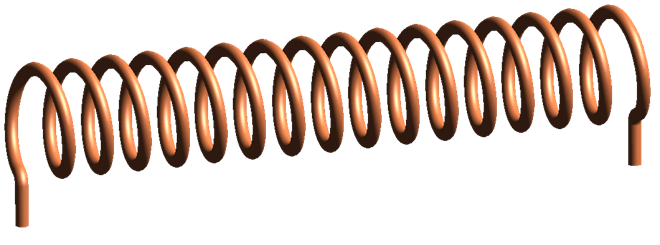
Image of a solenoid by Zureks is released into the public domain.
Given what you now know about electromagnets—and that you now know how to make one—try these experiments yourself to see which ones produce a stronger electromagnet. Measure the strength of the magnetic field by counting how many paperclips the electromagnet can pick up. Remember to keep some notes.
- What happens if you make a 175- and 200- turn coil?
- What happens if you wind your coils more neatly, tightly, and compactly?
- What happens if you wind a coil in multiple layers, i.e., wind 50 turns on top of 50 turns in a 100-turn coil?
- What happens if you connect more batteries to the coil? Add one additional AA 1.5 V battery at a time to see the effect.
- What happens if you use a wooden core instead of a steel or iron core? What happens if you use a plastic core or a tin foil core? Which of these materials work best to concentrate the magnetic field? Why do you think some materials don’t work? Or a plastic core? Or a stainless-steel core? Or a tin foil core? Which of these materials work? Why do some materials not work?
Electromagnets are fun to play with, but do you think we can use then to solve real-world problems? Consider these possibilities.
Watch these videos to learn even more about electromagnets and their amazing properties.
Students create their own small electromagnets and experiment with ways to change their strength.
Learn more about the basic concepts in magnetism, including magnetic poles, magnetic fields, and electromagnets.
Electromagnetism is one of the four fundamental forces of nature. Learn more.

